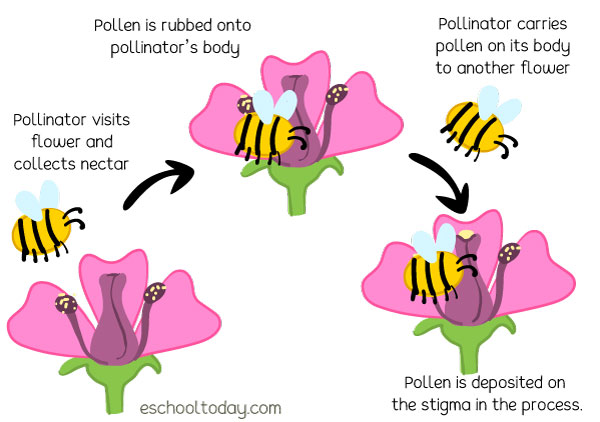- Pollination
What is Pollination?
Pollination is the mating process in flowering plants. Specifically, it is the transfer of the pollen grain (containing the male cell) from the anther to the stigma of a flower.
Again, note that some plants do not flower, and reproduce by asexual means. That means the flower on a plant is a vital structure for the existence of that species. In the flower, many tiny structures work together to make reproduction possible.
What happens during pollination?
When a mature plant is ready to reproduce (produce and receive pollen), its buds will swell and open into a flower. Many plants that depend on pollinators produce very lovely and bright colors. They also give off very sweet smells (fragrance) that pollinators cannot resist, and they produce nectar with is free sugar for pollinators. Pollinators suck the sugar as food (energy).
The main role of the bright colors and fragrance of flowers is to attract the pollinators to visit the flower.
In the pollination process, a pollinator visits a flower to get nectar and pollen. On the flower, they have to get inside and dig into the nectary (a deep chamber usually in the inside of the flower) for the nectar. As it gets nectar from the nectary, pollen grains from the flower will rub onto the pollinator and stick to its body.

As the pollinator moves from flower to flower, its body collects more pollen. As the pollinator continues to visit more flowers, its body is rubbed off against the female part of the flower, and pollen is deposited on the stigma for fertilization to occur.
It is important to note that some flowers will not accept male pollen from the same plant. In a matter of days after fertilization (for many flowering plants) the petals will drop off the flower as the seed development begins.
